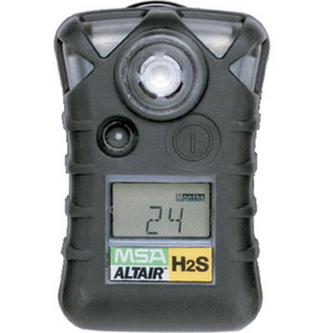Do I Need a Diffusion or Pump-Style Gas Monitor for My Job?
Deciding which type of gas monitor is right for you is simple if you know what you need the monitor to do. The difference between the two main styles of monitors comes down to the way they sample the air.
At PK Safety, we carry both types. Single gas monitors like the MSA ALTAIR Single-Gas H2S Detector are something you strap to your belt or the front of your shirt and wear with you in areas that may have pockets of hydrogen sulfide. It warns you with beeps, flashing lights, and buzzing if the levels become to great.
A diffusion gas monitor is used by bringing it into areas where gas may be a problem. The sensors need to physically come into contact with the gas it is designed to monitor.
The other type of monitor is the pump monitor. 4-gas monitors like the BW Honeywell Gas Alert Max XT II or the RAE Systems QRAE II have internal pumps that suck air through a tube which can be lowered or pushed into the space workers are going to be entering.
Gas monitors with internal pumps are designed to pull air from a remote location to determine if the atmosphere is suitable for workers to enter. They generally cost more than non-pump monitors, they are often noisy, and they rattle when in use. But they provide a clear picture of the air in a confined space before workers enter. Some monitors such the QRAE II can be converted from pump to diffusion in order to save battery life and stop that incessant buzzing noise. If remote sensing is not necessary, this is sometimes a nice option.
If you still have questions about which type of monitor is best for your specific needs, or you just don't like watching videos, contact us. We have certified technicians and experts on staff to answer any questions you may have.
Related Searches
4 Gas Monitor, Types Of Gas Detectors, Qrae 3, Microrae 4-Gas Monitor, Fixed Gas Detector, Confined Space Gas Monitor
Recent Posts
-
Promoting Safety: National Work Zone Awareness Week is April 15-19, 2024
Each year, the National Work Zone Awareness Week (NWZAW) places the spotlight on the importance o …Apr 11th 2024 -
Understanding 4 Gas Monitors: How They Work & Why They Are Important
In today’s increasingly dynamic industrial landscape, 4 gas monitors have emerged as critical com …Apr 8th 2024 -
April Showers Require Workers to Wear Hi-Vis Safety Rain Gear
While April showers bring May flowers, they also bring challenges, particularly for those working …Apr 1st 2024





